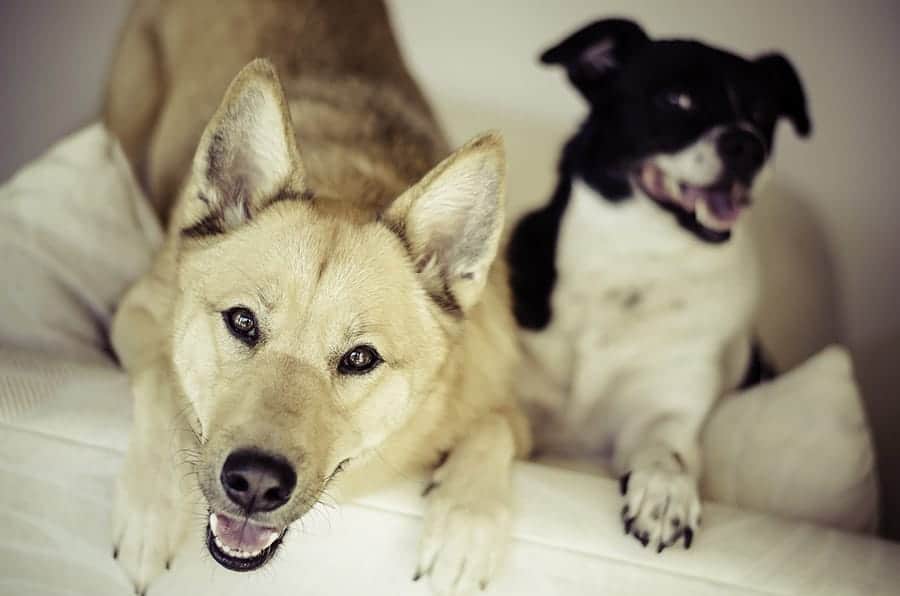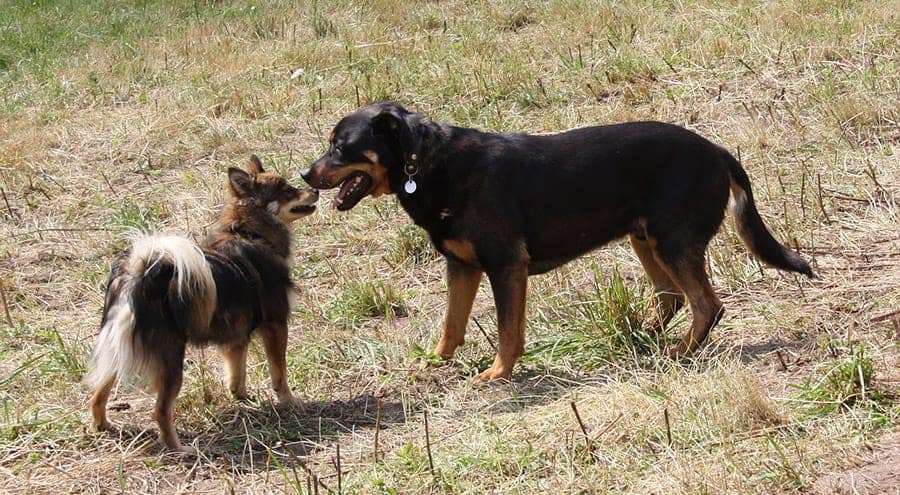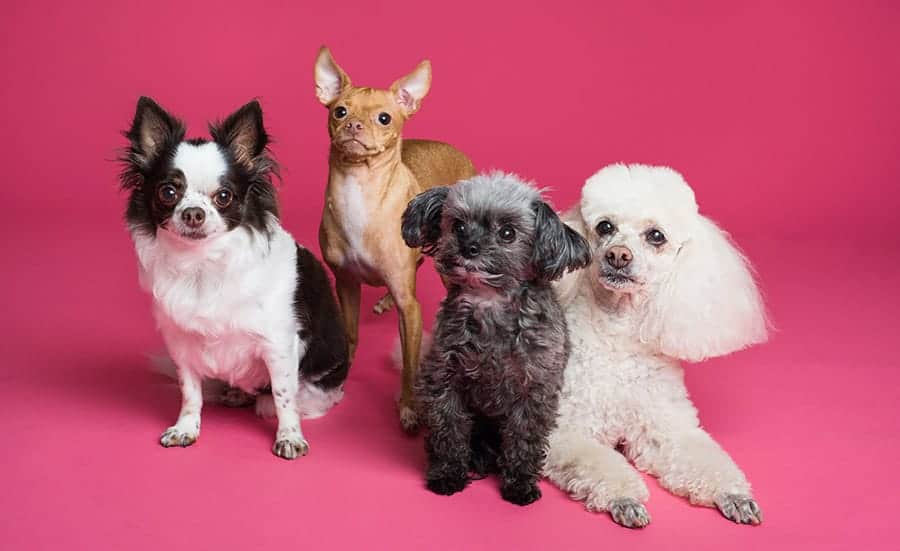How to Introduce Dogs – 7 Steps You Need to Know
Published: Last updated: by Jessi Larson Affiliate Disclosure: We hope you love the products we've recommended! As an Amazon Associate we earn a small share from qualifying purchases.Watching two dogs play together is one of the most joyous sights you’ll ever see. But first, you’ll need to figure out how to introduce dogs in a way that fosters a positive relationship.
Training Guide: How to Introduce Dogs
After researching training guides and talking to experts, we’ve created an easy 7-step process for how to introduce dogs in a peaceful, positive way.

1. Pick the Right Setting
When you’re making the introduction, it’s important that neither dog feels territorial about the space they are sharing.
Even if the final goal is to bring another dog into your home, you’ll want to place your resident dog into a neutral space that doesn’t need to be defended.
Whatever space you choose, make sure it’s open and has plenty of room for the two dogs to share. Try to eliminate tight places that could lend themselves to one of the dogs getting cornered or feeling trapped.
A park is a great choice as long as it isn’t one of the dogs’ favorite, which could make them feel territorial.

2. Have the First Meeting on Leash
The first time that you bring the two dogs together, both of them should be wearing a leash.
Start out by walking the dogs in the same direction but with some space between each other. The distance of 10 feet is recommended for the first meeting.
Make sure you don’t place too much tension on the leashes as you lead the dogs because they can pick up on that tension, which may cause problems.
If either of the dogs becomes aggressive or shows signs of wanting to attack the other, you need to seek the help of professional trainers before going forward with the introduction.
If things go well, on the other hand, you’re ready to move onto the next step in the process.
3. Drop the Leashes
Now that your dogs have walked along side each other without any issues, it’s time to let them meet with their leashes on, but dropped to the floor.
Again, it’s very important this is done in a neutral space with plenty of room to avoid tight encounters as they learn to approach and engage with one another.
If things are going well and the dogs seem to be getting along, let them interact for a little while, but cut things off after a few minutes. It’s important to let each meeting end on a high note.

4. Staging Interactions Inside the House
With the initial introductions behind them, it’s time to introduce your new dog into your home. But this process needs to start in the yard.
Before bringing the new dog into your house, move the resident dog into your back yard. Start the interaction in the yard first, then move into the house if things go well.
If they do not, don’t worry, separate the dogs immediately and try again at a later time.
5. Allow Your Dogs to Interact
Given that your dogs aren’t exhibiting any aggressive or fearful behavior or body language, you should allow them to interact without much interruption from you.
In fact, too much human interference can put stress on the situation and create tension in the dogs.
If you find it necessary, most dogs will react favorably to verbal interaction and cues from you. For example, if the dogs are getting a bit too energetic, you can calm them down with some reassuring words.
6. Separate the Dogs While You Are Away
Even if things are going well, it’s a good idea to keep your dogs separated when you are not around.
You can do this by placing them in different rooms or crates. This will also help the new dog get adjusted and prevent or minimize any chewed up furniture or messes.

7. Introducing a Puppy to an Adult Dog
Puppies are bundles of joy and energy and sometimes this can get overwhelming for adult dogs. If you are introducing a puppy to an adult dog, make sure you take extra care around both of them.
Of course, you want to make sure the puppy is physically safe from harm, especially if your adult dog seems to dislike it. Do not let the dogs together unattended if that is the case.
Even if that is not the case, it’s a good idea to separate the dogs at multiple times per day to give each of them a needed break.
Because the energetic puppy behavior can be a nuisance to some adult dogs, it’s perfectly normal for your adult dog to discipline the puppy (with a growl, for example) to teach it some initial boundaries. As long as no aggression occurs, this is a good learning lesson for the puppy.
Why Proper Introductions Are So Important
So why not just let the dogs take care of their own introduction? After all, they’re social animals and can manage to sort things out on their own, right?
Well, not quite.
Though it’s true that some dogs manage to get off to a great start without any issues, others may resolve their problems in an aggressive manner.
If not introduced properly, an unpleasant interaction can set the tone for a long-term contentious relationship between the two dogs, or even worse, result in an altercation or injury.
Final Thoughts on How to Introduce Dogs
We hope these tips have shown you how to introduce dogs without any issues.
If you’ve gone through all the steps above and still need help with the process, however, consider hiring a professional trainer’s services. They can be a huge help with the process.
If you get this important step right, you’ll forge a lifetime of friendship between these dogs!

Watch a Training Video
As you learn how to introduce dogs, sometimes it helps to see the process enacted. (I know I’m a more visual learner!)
Dog trainer Zak George has fantastic advice for new dog owners, and lucky for us he’s put together a video on how to introduce dogs that’s a must-watch.
Take a peek – you’re sure to find some helpful tips and tricks for how to introduce dogs.



 Getting a New Dog?
Getting a New Dog?